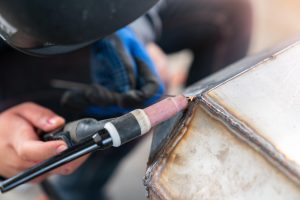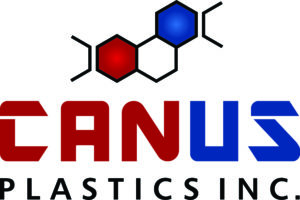Diagnosing and Fixing Weak Spots in Plastic Welding

Plastic welding plays a key role in creating products we rely on every day. It’s the process of joining plastic parts together using heat, allowing for strong, durable joins that are essential for a variety of applications, from simple toys to complex components in machinery. Since plastic is so versatile and used in countless ways, getting the welding right is critical to ensure everything works as it should. But like any technique, plastic welding isn’t always perfect. One common issue that pops up is weak spots. These are areas where the weld might not be as strong as needed, potentially leading to failures or breakages.
Identifying and fixing these weak spots is a big part of ensuring your plastic products are up to standard and performing at their best. The goal here is to figure out what’s causing these problem areas and how to remedy them. Doing so not only keeps things working smoothly but also helps avoid wasting materials and time.
Understanding Weak Spots in Plastic Welding
Weak spots in plastic welding are areas where the bond between the joined materials is compromised. These flaws can lead to cracks or even entire sections coming apart. Several factors might cause these weak spots, often stemming from issues during the welding process itself. For instance, using the wrong welding technique or not applying enough pressure can leave the joint susceptible to breakage. The type of plastic being used can also play a role. Different plastics have different melting points, and not accounting for this can result in poor adhesion.
To dive deeper, think of welding as cooking a perfect dish. If the ingredients or the method isn’t quite right, the result won’t taste or hold together as you’d like. Similarly, in welding, if the heat or technique isn’t spot on, the joint may not hold up. Knowing the specific characteristics of the plastic and matching the correct technique ensures a solid weld.
Common Techniques to Diagnose Weak Spots
To catch weak spots before they cause trouble, it’s essential to know how to spot them. Here are some simple ways to identify these areas:
– Visual Inspection: Look for uneven seams, bubbles, or discoloration, which can indicate a weak weld.
– Touch Test: Run your fingers along the weld. Any rough patches or dips may highlight an issue.
– Ultrasound Tools: These tools can reveal internal weaknesses that aren’t visible to the human eye, offering an in-depth look at the weld’s integrity.
These methods can help pinpoint problem areas early, allowing for timely fixes and robust plastic products ready for use. By using them regularly, you can maintain high standards in plastic welding, ensuring quality in every piece you create or work with.
Effective Methods for Fixing Weak Spots
Addressing weak spots in plastic welding requires a thoughtful approach to ensure durability and function. When you spot these imperfections, it’s essential to have a few go-to methods for correction.
Re-welding is a reliable way to mend weak joints. The goal here is to apply the right amount of heat and pressure to fuse the plastic materials thoroughly without damaging them. It’s a bit like ironing out wrinkles in fabric. You want to smooth things over, ensuring every edge and seam is seamless without going overboard and causing burns or tears. This approach helps create a uniform bond that stands up to wear and tear.
Another effective technique involves using fillers and adhesives. Fillers can occupy gaps and uneven areas, giving the joint added strength. When paired with high-quality adhesives that are compatible with the type of plastic in use, you get a stronger, more resilient bond. The right adhesive can make all the difference, ensuring that your project stays intact.
Finally, consider reinforcing the weld with extra material. This step isn’t always necessary but helps when dealing with areas that experience significant stress. By adding additional layers or supporting structures, you can distribute the load more evenly, much like how adding extra beams fortifies a building. This additional support helps in prolonging the life of the weld and, by extension, the entire product.
Preventing Weak Spots in Future Projects
Preventing weak spots before they happen saves time and reduces waste. Start by choosing the right plastic materials for your project. Each type of plastic has unique characteristics and ensuring you choose the right one can prevent future headaches. For instance, some plastics are more flexible, while others are better suited for high-stress applications.
Temperature control during the welding process is another critical factor. Maintaining precise control of the heat ensures that the plastic melts just enough to bond without overheating. Too little heat and you risk a weak bond, too much and the plastic could become brittle. It’s similar to making caramel: the right temperature results in a smooth, tasty treat, but too much heat quickly burns it.
To cultivate strong and durable welds from the beginning, here are some best practices:
– Prepare the plastic surfaces by cleaning any dust or debris before welding.
– Conduct a trial run with scrap pieces to fine-tune the tools and techniques you’ll use.
– Monitor the temperature consistently using thermocouples or thermal cameras.
– Keep the work environment stable, avoiding drafts or extreme changes in temperature.
By incorporating these strategies into your project workflow, you can significantly reduce the chances of weak spots developing, leading to better outcomes and trusted results.
Ensuring High-Quality Results with Canus Plastics Inc.
When aiming for flawless results, choosing the right partner can make all the difference. This is where professional consultation shines. Experts bring invaluable insight, honed by experience and backed by the latest technology. Working with seasoned professionals means tapping into a rich reservoir of knowledge, where practical solutions and innovative techniques come together to solve even tough challenges.
Leveraging advanced machinery and equipment, professionals can achieve precision and consistency that manual processes shouldn’t match. Technology acts as an extension of expertise, enabling more accurate diagnostics and precise repairs. This combo is particularly beneficial when pushing the boundaries in complex projects, ensuring quality and performance aren’t sacrificed.
Incorporating these high standards in projects enhances reliability, making products that withstand time and usage. With expert guidance, every phase from planning to execution is optimized, ensuring your project not only meets but exceeds expectations. Collaboration with skilled professionals empowers your project, marrying time-honored practices with modern ingenuity to deliver exceptional results.
For those looking to achieve excellence in plastic projects, considering the right materials is key. If your next endeavour involves plastic for thermoforming, explore how Canus Plastics Inc. can assist with our expertise and technologies. Learn more about our advanced solutions and how we can support your project in Ottawa.

